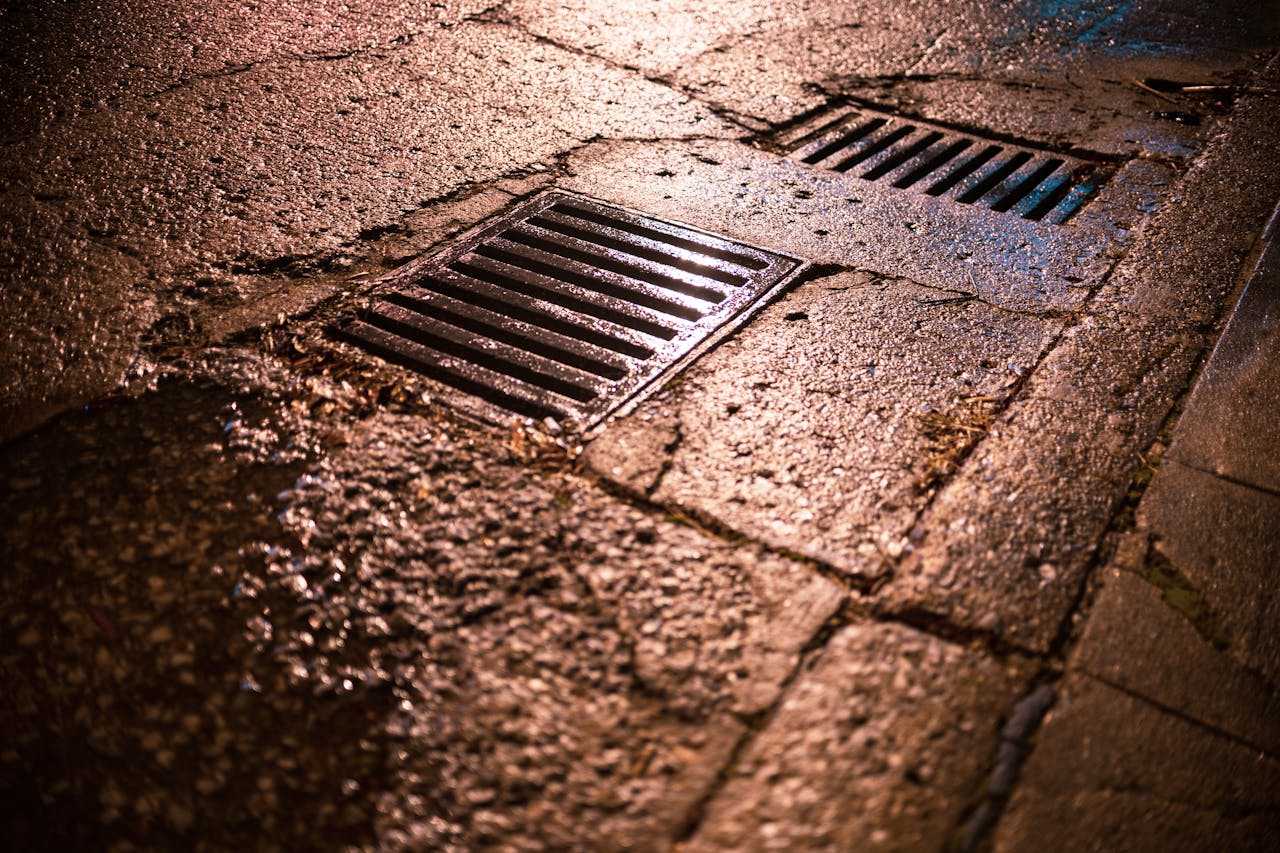Septic tank drainage forms the backbone of waste management for millions of properties without access to mains sewerage systems. Unlike surface water drainage that manages rainwater runoff, septic systems handle all wastewater from your property through a carefully engineered biological treatment process.
A properly functioning septic system protects public health while providing reliable waste treatment for decades. However, many homeowners lack basic knowledge about how their system operates, leading to preventable failures that cost thousands in repairs and potential environmental contamination.
How Septic Tank Drainage Works
The septic drainage process begins when wastewater enters the primary tank through your property’s main drainage pipe. Solid waste settles at the bottom forming sludge, oils and grease float to create a scum layer, whilst clarified water sits in the middle zone.
Beneficial bacteria break down organic matter naturally, converting waste into harmless byproducts. This biological treatment continues as partially treated water flows into the drainage field, where soil filtration completes the purification process before water reaches groundwater supplies.
Drainage field design depends on soil conditions, with perforated pipes distributing effluent through gravel beds. Proper sizing prevents system overload whilst adequate soil depth provides final treatment before water rejoins the natural water cycle.
Signs of a Problematic Septic System
Slow draining fixtures often indicate the first stage of septic system problems. When sinks, baths, or toilets drain sluggishly, your tank may be approaching capacity or developing blockages that restrict normal flow patterns.
Unpleasant odours around the tank area or drainage field suggest system failure. These smells indicate that untreated waste is surfacing rather than processing through the intended treatment stages, creating health hazards and environmental risks.
Wet patches or unusually green grass above the drainage field reveal system overload or pipe damage. Surfacing effluent creates unsanitary conditions whilst indicating that your system cannot handle current wastewater volumes effectively.
Gurgling sounds from plumbing fixtures warn of ventilation problems or blockages within the system. These noises often precede complete system failure, making early intervention critical for avoiding expensive emergency repairs.
Maintaining Your Septic System
Regular pumping removes accumulated sludge that biological processes cannot break down completely. Most systems require pumping every three to five years, though household size and usage patterns influence the optimal frequency for your specific situation.
Water conservation reduces strain on your septic system by preventing hydraulic overload. Spreading laundry loads throughout the week rather than concentrating washing into single days helps maintain steady flow rates that your system can process effectively.
Avoid flushing non-biodegradable materials that disrupt bacterial activity. Items like wet wipes, feminine hygiene products, and chemicals kill beneficial bacteria whilst creating blockages that lead to system backups and failures.
Protect your drainage field by avoiding vehicle traffic and permanent structures over buried pipes. Soil compaction reduces treatment effectiveness whilst root intrusion from trees and shrubs can damage pipes and restrict flow.
When to Call a Professional
Annual inspections by qualified technicians identify developing problems before they cause system failures. Professional assessments check sludge levels, inspect baffles and pipes, and evaluate drainage field performance to maintain optimal system operation.
Persistent drainage problems require professional diagnosis even when simple maintenance seems adequate. Complex issues like pipe damage, soil compaction, or bacterial imbalances need specialist knowledge and equipment to resolve effectively.
Emergency situations demand immediate professional intervention to prevent health hazards and environmental contamination. Sewage backups, surfacing effluent, or complete system failures require urgent attention that only qualified contractors can provide safely.
Protecting Your Investment Through Proper Care
Septic tank drainage systems provide reliable waste treatment when properly maintained and operated within design parameters. Understanding how your system works empowers you to make informed decisions about usage patterns, maintenance schedules, and professional services.
Regular maintenance costs far less than emergency repairs or complete system replacement. By following proper care procedures and scheduling professional inspections, you protect both your property investment and the environment whilst avoiding the disruption and expense of system failures.

Comments are closed